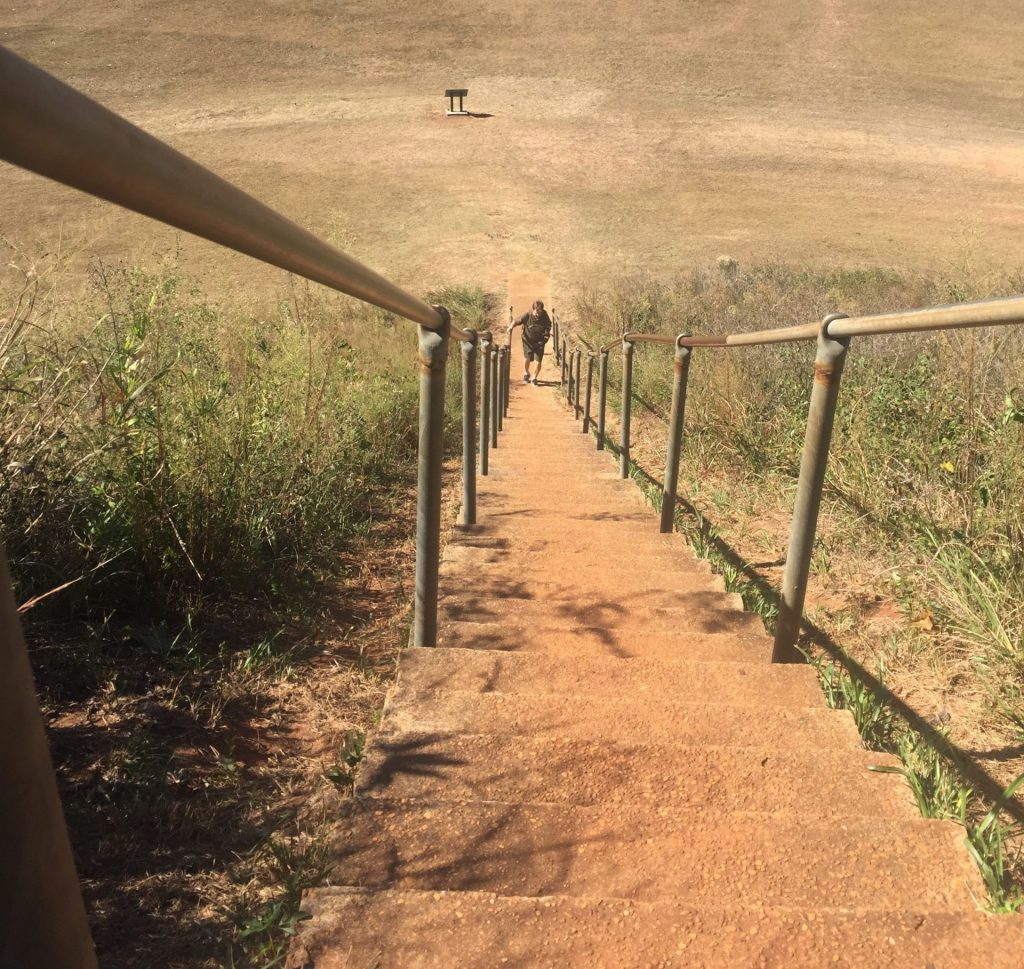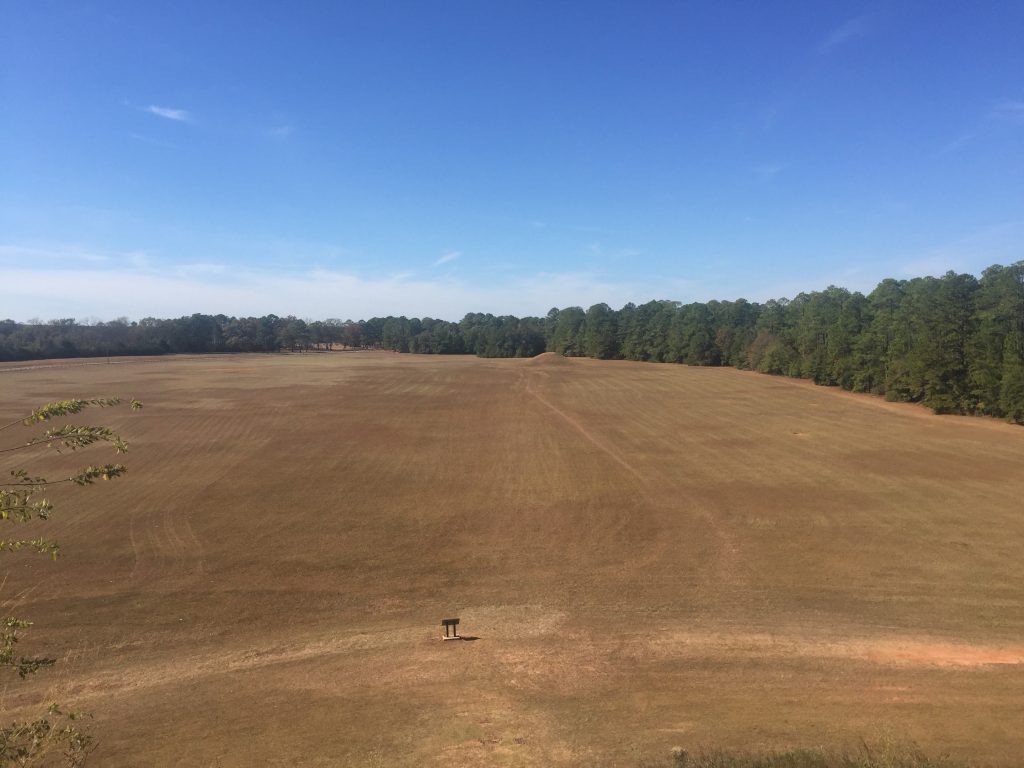Everything seemed to be headed downhill by the end of October 2016. Avner seemed unwilling or unable to control himself. My vision was getting dimmer all the time. I had to stop driving at night and I was quickly reaching a point where I would stop driving altogether. I compensated by replacing my demolished bike with two used bikes, a road bike for training and racing and a mountain bike as a commuter and off-road bike. I may not have been safe at 30 to 70 mph, but I felt that 10 to 20 mph was something I could handle. My wife replaced her van with a small SUV.
I brought Avner with me to the local bike shop, while I shopped for the accessories I needed for the new bike, like lights, and a new pannier rack so I could carry cargo, like groceries. Avner seemed smitten with a small tool in the shop. He didn’t have any spending money so I asked him to leave it behind. He could save for it and get one later. A few days later, he was fidgeting with a similar tool at home. I asked where it had come from and he claimed to have found it at school. We were highly suspicious but chose to wait instead of accuse him of theft.
Because of Avner’s challenges, we finally reached out to the Florida State University Center for Autism Research and Development (FSU CARD). Dr Schmidt had suggested CARD years before, but their programs frequently conflicted with other plans or seemed irrelevant at the time. One of Avner’s friends from the troop had recently been diagnosed as having an autism spectrum disorder as well. He and his family seemed to be doing very well with CARD, so we took a closer look and enrolled.
CARD was a good experience for us mostly as a family. We enrolled in a social skills workshop and parents met in one room while their middle school to high school age kids met in another room. Parents were taught how to coach certain social skills, mostly about making and maintaining friendships. The kids were in a class to practice those skills that we adults were coached to support. Barbara and I felt a little smug, since Avner had a few good friends and was very gregarious. When he chose to, he could genuinely charm people.
As a result of the workshop, Avner recruited a young man from the workshop to join our troop. He adored Avner. Avner vacillated between keen interest and ignoring his new friend. However, R was eager to go on our November camping trip to Kolomoki Mounds State Park in southern Georgia.
I had just finished my last ticket, a self assigned project, for my Wood Badge, advanced leadership training for adult Scout Leaders. Since Crill couldn’t make the trip, I felt as if some of the responsibility for the troop was on my shoulders for this trip. I rode on the bus with Geoff, another Assistant Scoutmaster and most of the youth. The parents of another scout met us at the campsite. Since we didn’t have a truck to pull the troop trailer, we loaded as much gear in the bus as we needed along with all the personal gear from the scouts. Since I was visually impaired, Geoff had to drive the bus.
Setup on arrival to the park was simpler than usual. There was less communal gear to setup, so personal tents went up quickly and we went to bed. Avner shared a tent with his new recruit.
Autumn camping in the North Florida and South Georgia area is lovely. The summer heat is finally gone and the bugs have mostly retreated. The nights can be cool but seldom cold and the afternoon hikes through the oak, gum and magnolia woods are a salve to the soul.
Kolomoki is the site of a substantial Native American village and hub of ceremonial and commercial activities which predates European colonial settlement. The site gets its name from the numerous earthen mounds constructed by the native people who originally occupied the area.
Today, the site is located near Highway 27 in southwestern Georgia. There are a number of camping options, including the pioneer (youth) campsites which are frequently taken by Scout troops and church groups. There are nature trails, a small museum with a gift shop, miniature golf, and a lake for fishing.
As usual, everyone woke around dawn. The Scouts prepared their breakfast for the day. With the lighter kitchen, the adults made oatmeal for a hearty breakfast, with a trail mix of dried fruits. Two of the boys who brought bicycles, took them and some fishing gear to the lake. They asked if they could go secure some bait at the gift shop and we agreed.
We have a fairly liberal policy on letting the Scouts do explore. They need to use the buddy system. They never go anywhere, away from the campsite, alone. They need to tell the adult leaders where they are going. So, we were surprised an hour or so later, when an unknown vehicle pulled into our campsite and returned our Scouts to us.
Our scouts decided that since they couldn’t find bait in the park, they would ride into town, some miles away. The kindly couple had picked up our young men at a local McDonalds with their bikes and offered a ride back to camp. The older Scout’s parents chewed out their son appropriately. Geoff and I capped off the lesson by explaining to all the Scouts and especially the two explorers that they were not to leave the park, especially without notifying the adult leaders and they should never get in a car with adults unknown to them.
With everyone awake, fed and adrenaline pumped, we decided to set out for the nature trail. When all else fails, walking the youth into submission seems to work. We started by taking the troop in our bus to the museum and looking at the exhibits and enjoying the rocking chairs outside. Next, we turned our attention to the large mound across across the field. The CCC built stairs from the base to the top, with lightweight handrails, made of metal pipe.

The top of the main mound gives a commanding view of the park below. We stopped for a few troop pictures and then made our way down to the bottom again. We hiked the little trail adjacent to the mounds and showed some of the younger scouts, how to identify the local plants. We gathered back at the bus and returned to Pioneer Campsite 2, where our tents were pitched, and enjoyed our lunch.


A group of Scouts congregated around the wooden picnic table to play card games. A more adventurous group followed a trail to a ravine where there was a lot to explore. The adults gathered together to unwind, enjoy a leisurely lunch and enjoy the natural setting.
It was still early afternoon when one of the scouts came out of the woods with a sense of urgency. Apparently the explorers in the ravine had upset a beehive or hornets nest in or near a log and there was some some scouts were still in the ravine.
The parents who drove themselves went immediately to the ravine. Geoff and I went to the bus for the first aid kit and epi-pen, then we headed to the nearby trail to join the group.
When we got to the scene, the situation wasn’t exactly what we expected. I don’t even recall if anyone had actually been stung. Some of the boys were laughing nervously about the sport they’d had being chases by the insects they had disturbed. Halfway between the ravine floor and the trail where we all stood, Avner was laying on his side.
In the confusion of the first report, we prepared for an allergic reaction to insect stings. Instead, I was now looking down a steep incline at my own child, unable to get up or crawl up the hill.
In their haste to escape the swarm, the scouts scrambled up the same narrow ascent back to the trail. Somehow, either pushing past one another or reaching out to steady themselves, Avner was unbalanced and came down hard. Now, he seemed alert but he couldn’t get up. Further complicating the situation, the hill was too steep for sure footing to just walk down and lift him out.
We didn’t have any rope. The heaviest line we had was for staking out our tents, like lightweight paracord. We sent a sure footed scout down the hill to use a tree as a brace to give Avner a hand up. We tried making a human chain to reach him. He was stubbornly just beyond reach.
Somebody had a long heavy duty extension cord. I tied a bowline at one end and a scout walked it down to Avner. If you aren’t familiar with knots, a bowlinemakes a fixed loop that doesn’t tighten. It’s ideal for rope rescues because the rescued person can put it around their body, under their armpits without getting squeezed when the rescuers hoist them up to their level.
Because we couldn’t get Avner upright, we had to drag him up the hill. Even as a relatively smaller scout, the extra drag meant extra effort to pull him up. I wrapped the end of the extension cord around a tree to take up the slack as we pulled Avner up to the main trail.
Having taken my seat at Wilderness First Aid a few months before, Geoff was prepared to assess and stabilize Avner’s condition. We fashioned a stretcher with a tarp and one of my trekking poles. Because Avner complained about his leg, a broom handle and my other trekking pole were tied to the leg as a splint. We transported him to the bus and had to figure out our next move.
Boy Scouts of America has very strict Youth Protection Training and policies. We had to take Avner to a hospital but we had to determine how to divide the adults. Fortunately all four adults were trained, a minimum requirement. Instead of halting all activities, we decided that Geoff would drive the bus with Avner and me. The other adults would stay behind with the troop.
Rural Georgia is no place to have a medical emergency on a weekend. The only hospital is small. The emergency staff was sparse and equipment was minimal. The first task after providing insurance information and identification was getting someone to offload Avner from the bus onto a gurney. That was followed by vitals and a basic intake exam. Fortunately, they had basic radiology and performed an X-ray. They couldn’t see anything broken but Avner couldn’t move his left leg. After several hours, we were instructed to take him to a “big hospital” where he could get a CT or MRI and he was given crutches.
I called Barbara on the way back to the campsite with the news. She came to get Avner, making a trip of nearly two hours each way. She arrived at the campsite as darkness descended upon us. I stayed with the troop so that I could be the second adult on the bus for the ride home, the next day.
